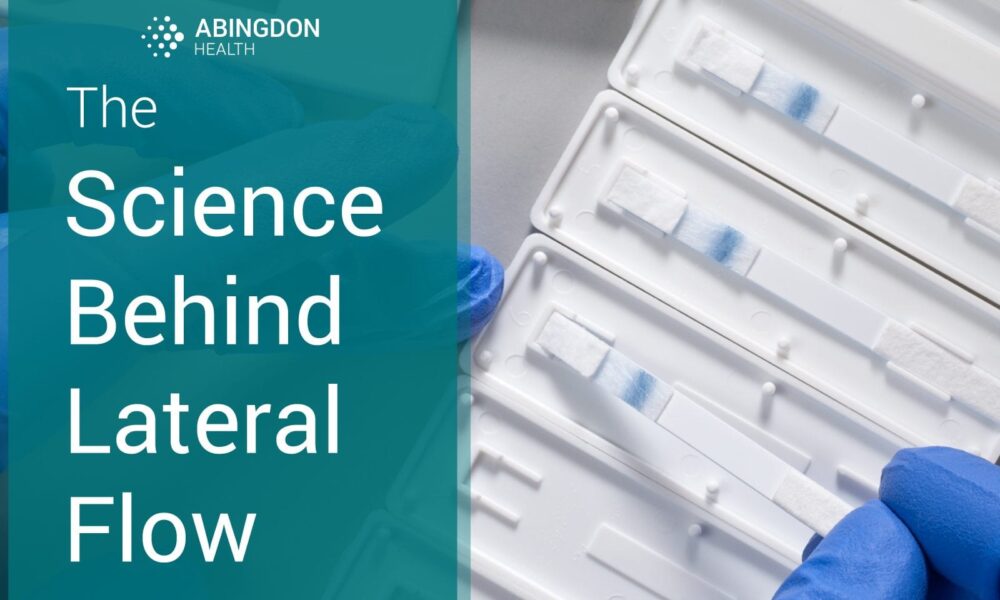We regularly get asked questions about how to make a lateral flow assay. The questions are generally centred around technical considerations such as material selection and usage, achieving optimum performance, scale-up, routine manufacturing and configuring readers with lateral flow rapid tests.
So, over the upcoming weeks and months, our lateral flow specialists will impart their knowledge as part of our Science Behind Lateral Flow series.
First up is Nina Garrett, Abingdon Health’s Head of Assay Development.
Initiating lateral flow development
Embarking on a lateral flow test development project is a daunting prospect, but of course worthwhile. However, with the right support and experience, whether in-house or within your development partner’s organisation, this process can be smoother than first thought.
Therefore, Nina explains what important considerations are needed to commence the development of a lateral flow assay.
“Lateral flow test development programs require several key pieces of information to be determined at the start of any project. For example, performance targets such as analytical sensitivity and specificity need to be determined. But consideration for end-user requirements must be high on your list of priorities also. Considerations such as how many steps in the test running protocol are appropriate or how the end user will interpret the lateral flow test e.g will a reader unit be needed, in the case of a quantitative test development, and if so what type of reader."
"Understanding these areas are important and works towards designing a lateral flow test suitable for scale-up and beyond.”

“In our case, we determine the above requirements as part of our established, formal design control process under ISO and GMP. We capture our customers’ critical design requirements and then convert them into our Product Requirement Specifications (PRS) document. The PRS is a key document for earmarking every tiny detail of what rapid test needs to be: for development and manufacture, and once the test is on the market. The PRS is approved by our customers and the development team uses the PRS as a template for the development program.”
Plan for your lateral flow development project
As Nina outlined above, assay development planning needs to cover both technical and practical considerations: it needs to be forward thinking, cover all eventualities and ensure the assay will perform and be viable for market release. Get this right from the outset and it will make the development process smoother.
Next edition of the Science Behind Lateral Flow Series
In the next edition, Nina will discuss selecting antibodies for lateral flow assays.
Keep a lookout for the Next edition of Science Behind Lateral Flow Series on LinkedIn or Twitter. Alternatively, register your email to receive these articles directly to your inbox.

